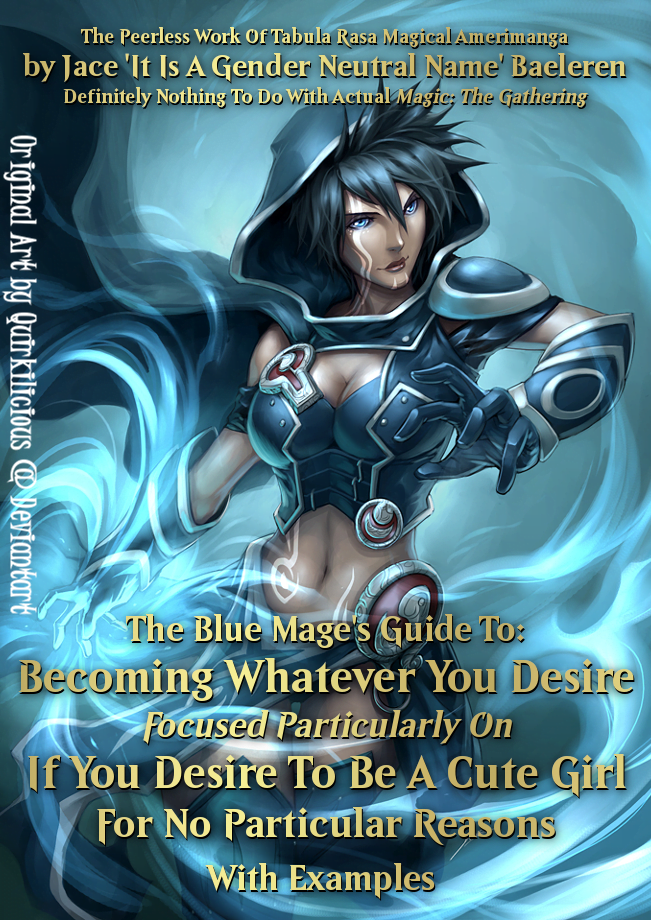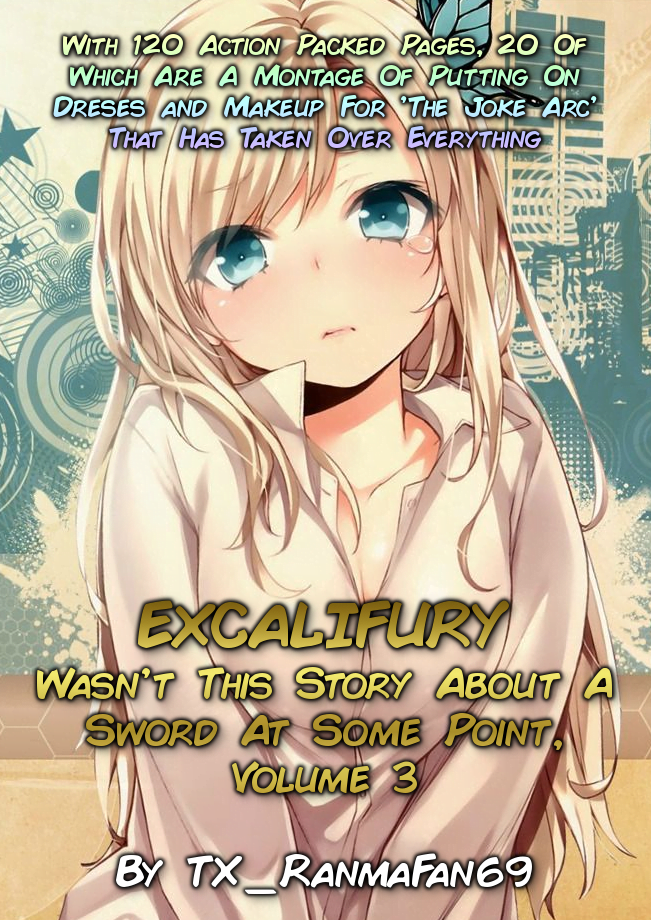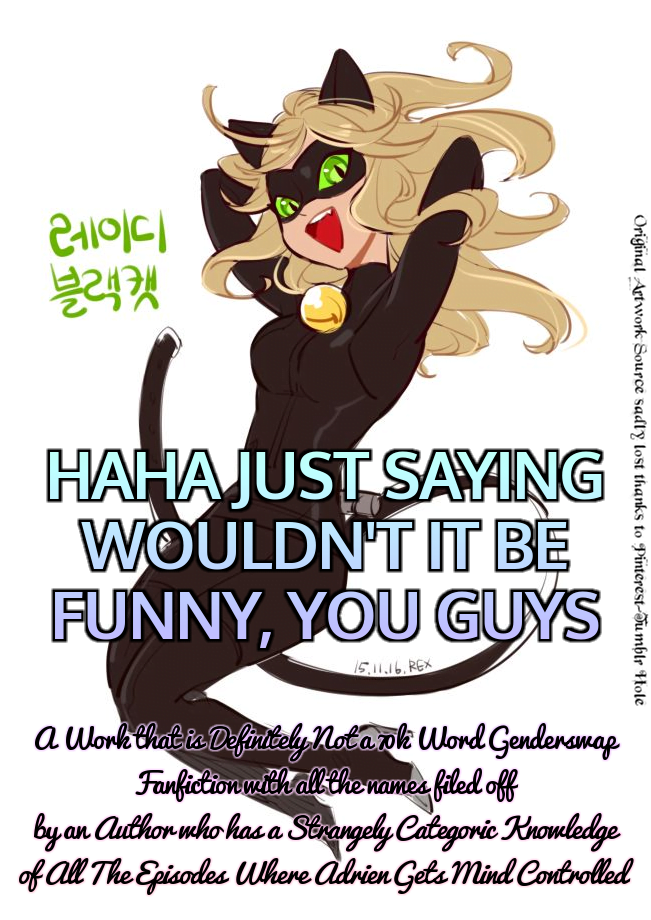Watching Culture Change in MTG
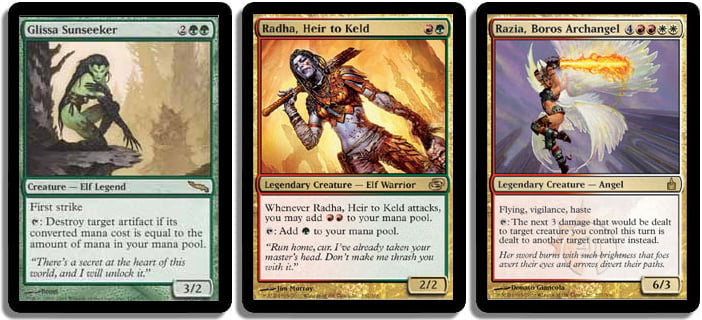 Years ago now I wrote an article about Magic: The Gathering and its representation of women. Please don’t go looking for that article; it’s not very good and even if I do make points I still stand by to this day I also sling around some really inappropriate ableist and whorephobic language which was both totally unnecessary at the time and cringeworthy now. I’ll summarise the points of the article here:
Years ago now I wrote an article about Magic: The Gathering and its representation of women. Please don’t go looking for that article; it’s not very good and even if I do make points I still stand by to this day I also sling around some really inappropriate ableist and whorephobic language which was both totally unnecessary at the time and cringeworthy now. I’ll summarise the points of the article here:
- Tity armour is bad
- Most of the big, tough and badass things are boys
- Most of the dirt and junk things are girls
This was not a hard and fast rule by any measure (I mean c’mon, it features the words ‘most.’)
At the time of writing this article I was a StarcityGames Featured writer for the free side of the site, back when the site had a forum of its own, a forum that got pretty weird as I related to it. It was a weird place because on the one hand, I was a featured writer paid for his words, and on the other hand, I had an actual banned topic list of people I shouldn’t talk to or talk about, and I understood, some other featured writers had even more restrictive rules on how they could post on the forums.
This was totally reasonable, by the way: I was at my best a condescending snot and at worst a volatile dickheel on those forums, even as I was, without really articulating it, trying to argue for accessibility and communality while being a total dick about it. Even if I wasn’t a dick, the suggestion ‘don’t talk in a way that looks insulting about one of our other featured writers’ is pretty obvious. I still remember, though, the way that the forums reacted to this article.
I saw three basic takes:
- This isn’t a problem
- Women don’t play Magic so it’s not a problem
- You’re a dude, why do you care?
What makes this even more interesting, in hindsight is that while the forums were negative about this, that article was being referenced by other featured writers. The culture of the game as we spoke about it was negative and hostile to the idea of examining this feminism issue. I remembered at one point, when someone asked me why do you care, you’re a dude, why I didn’t ask a woman if she wanted to write the article, with the statistical examination and the breakdown of the characters and whatnot…
And at the time I was struck to realise I could not name a single SCG woman writer.
I’m not bringing this up to point at SCG by the way. The top level people at SCG I’ve dealt with, by all accounts are genuinely good people. I have seen Pete Hoefling be in a lot of situations an Unnecessarily Good Guy. Ben Bleiweiss, as both a forum moderator and a dealer, has basically got conspiracy theory websites written about him and not one of them ever lines up with the guy who I remember putting me in my place in some extremely awkward situations, being very harsh but also very fair. My editors, Ted Knutson and Craig Stevenson, were both by all accounts stand-up people.
(I’m pretty sure Ted thinks I’m still a total joke of a human, but you do what you do).
That was where our culture was: The second biggest MTG site, and I, with the tools of the website’s inner workings at my disposal, could not find or name a single woman writer of the game. The writers for SCG were international but somehow precariously all very similar.
Fast forward ten years. I stopped reading StarCityGames years ago. Not any mark against them, but a shift to video in some production fronts when my country still didn’t have good internet infrastructure and the increased demands of MTGO kinda edged me out of the game for quite some time. I went back to MTGO as our internet improved, I started using Youtube all the time, and eventually, eventually, found myself looking at all the things that had changed while I was out.
I actually agonised over this paragraph because pointing out and naming names kind of spirals off into just this ridiculous list of people like I’m trying to brag about All The Girls And Enbies And Queer People In Magic I’m Fan Of, and that feels gauche. But I’ll give you this as an example of where we are now: I tune in weekly to watch someone’s mom play Magic. That would have been a punchline once.
As I get to the end of this article it’s hard to frame the conclusion, because I don’t want to say ‘well, we started including girls, go us!’ or ‘thank you, strange and wild unicorn girls, for coming to the culture and sharing your wisdom.’ I certainly don’t want to start patting everyone on the back for Not Doing The Obviously Bad Thing Any More. At the same time, the voices in the game – both making it, producing content for it, and being part of the play experiences – are more, more diverse, and better.
I guess what I’m saying is that I’m just really, really happy that things have gotten a bit better.
And we can make it better still.
This was written a few weeks ago, back before one of the Youtube Poop-Boy squad and his assorted jerkhole dinguses coordinated and sustained harrassment of Christine Sprankle leading to her leaving Magic and the community.
These people are reactionary jerks. They are not to be given countenance or power. They are absolutely to be dismissed and ignored and spurned from the scene. And if you find yourself saying ‘hey, well now, let’s not be too hasty,’ then you might find you are too close to those people to be someone I trust to make good decisions for the community.
My central point remains: The hobby is growing in its presence of women. The directives controlling the voice of what the game is about are seeking to enable and include women and nonbinary people. This space has gotten better and it can keep getting better. The awful parts of our community are lashing out louder and harder in their efforts to control it – and they should be driven out.
Also, being against the harrassment and abuse of Christine Sprankle doesn’t mean I think she’s blameless for things she said in the past regarding Alesha, Who Smiles At Death. But now is not the time, nor is now the time to tell people who are trying to make good happen and give people hope that there’s no point in doing so.
Bullet Journal Module: Project Tracker
If you’re at all like me, your Bullet Journal is a tool you use to put your actions in a greater context, and perhaps to either make yourself feel good about what you’re working on, or make it possible for you to know where you should be focusing your efforts next. I’ve got plans that work literally month to month, but I wanted some sort of module I could use going forwards as I use Bullet Journals more, so I could always look back a month or two and double check if what I’m doing is part of my plan.
With that in mind I devised this module with different tracker methods in it:
![]()
This tracker is set up so I can use it to mark weekl breakups – like the Podcast; it has enough room to give a short note for them. It can also be expanded across a spread in two larger sections, twice as wide, to allow a lot more room for notes on individual entries.
This is just the design version of the module. Don’t look into it, since I made this months ago and I don’t use it yet for my Bujo. But it’ll probably go in the front of my next one.
Game Pile: Olympia Rising
As with Snakebird before it, there are some games which you play, you experience, and you set aside. In the case of Olympia Rising my metric is this game cost me as much as a pair of chocolate bars, and I definitely got to have more fun with it than I would have out of a pair of chocolate bars.
There’s your really basic point: Olympia Rising is almost perfectly $5 of videogame.
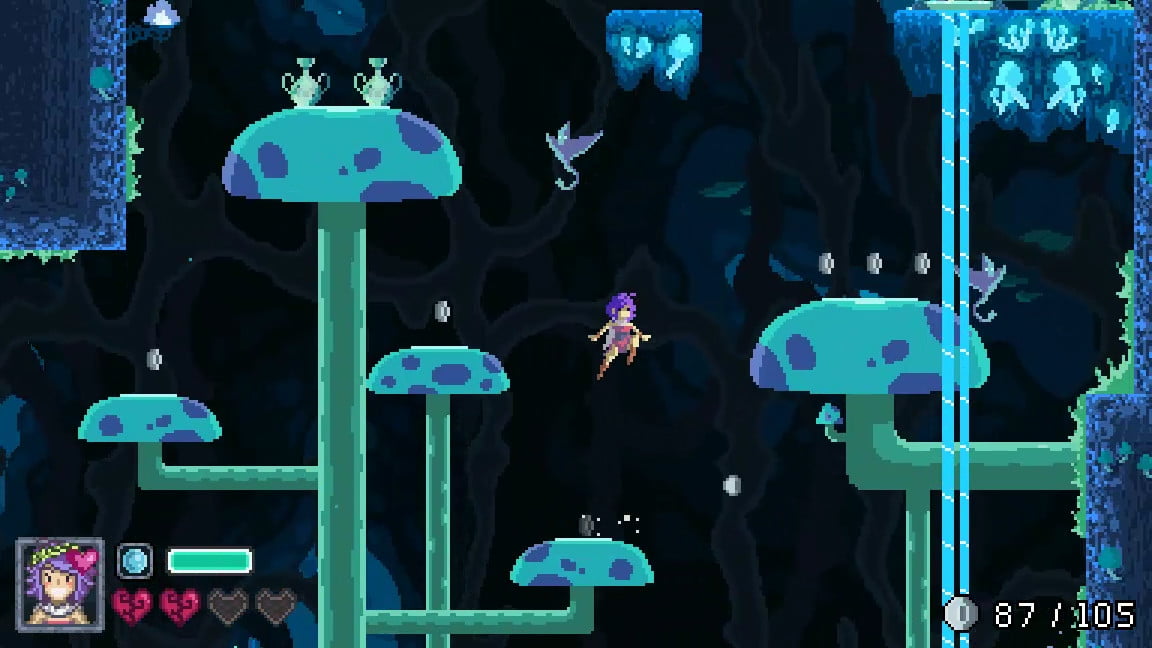
Sometimes a game gets on the list just because it’s interesting looking! Wanna know more about that? Well, let’s see what we got.
An Example _Plan – Encoded
Going through my drive and cleaning up, I found this outline for a possible print-and-play scenario game. I’m putting it up here, not to build hype for a project I’m not going to make, but rather to show you an example of the process I go through for _plan files.
Oh and if you’re curious, I label them as _plan files, because it means they show up at the start of the directory.
Continue Reading →
How To Talk To Your Trans Dude Friends About Boobs
One thing that exhausts trans people and wastes a lot of their time is explaining Some Of The Most Basic Stuff. I try to make sure I offer some basic explanations of things, not because I have special insight, but just as a basic footing. And this time, we’re going to real quick talk about how you, a cis boy, should approach talking to your trans boy friends, about their boobs – not boobs in general, but their boobs, this is important.
Don’t,
Okay, no, that’s not helpful. It is – you really don’t need to ask your friend about his boobs because, let’s face it, there’s lots of things you don’t ask your friends about and really, how interested are you in how your friends’ bits get sweaty? But anyway, let’s take it as a given that you’re going to open your mouth and try and Have A Conversation.
Continue Reading →BraveStarr!
BraveStarr, with its internal capital and double-r, is the story of a lone Native-American lawman from (maybe) the planet of New Texas, with his small coalition of friends, opposing an outlaw gang headed up by Tex Hex, who’s best described as a sort of Zombie Cyborg Cowboy. The fearsome crew of idiots and screwball villains wielding big boxy space-guns spent their time ‘terrorising’ the citizens of Fort Kerium, which is a giant mechanised city (buy all our playsets and toooys) made to protect the Prarie People and their Kerium mines.
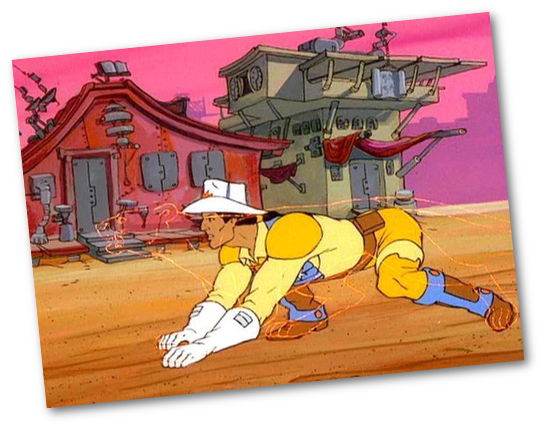
I feel that when it came to these 80s Merchandise shows, you’d often have details about the creators seep into the work. Part of what made M*A*S*K so remarkable was that there was so little there there, a story that just sort of farted out. If you looked at shows like GI Joe or Silverhawks, there was always a tiny drop of something going on there, an ideology you could point to and use to inform the work at large. It isn’t just something that a work is trying to say: creative people’s values and ideas become part of their work even subconsciously.
These subconscious biases are to me more interesting than a lot of intended messages: Especially when you’re dealing with media primarily designed for fast, forgettable consumption, the pulp of an era, people often don’t have the time to make media that has A Message. Bravestarr was a series that wanted to be a western, with a cool Native American protagonist who channelled nature spirits, espoused environmental and social consciousness, and protected the poor Prarie People of New Texas. That is to say, this story is about a Native American Cop protecting the Colonial invaders while they exploited the small, hairy subhumans who can’t talk properly.
There’s a historical context here – and like it or not, thirty years ago is actually history. Not that the atrocities against Native Americans or the racism in media isn’t longer lasting than that, but the 80s as a creative period were a time when those symptoms of oppression and marginalisation were being expressed differently to now. Now, you present a Native American character poorly and there’ll be an angry online presence making its feelings known. That’s not to say that this tension gets things fixed, but there’s a reaction. There’s an easily recognised, publically searchable, clear reaction to this kind of thing, the sort of thing that results in a Criticisms And Controversies entry on a Wikipedia page.
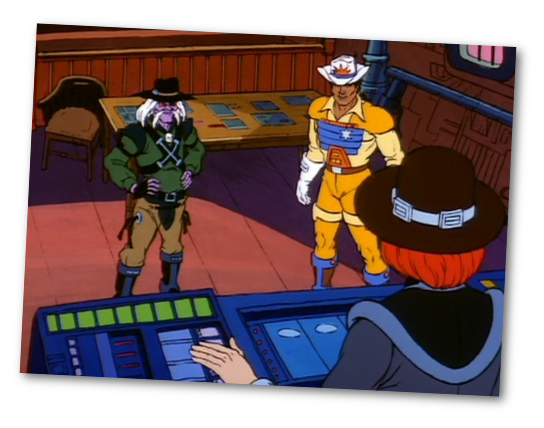
For these works of the 1980s, though, we didn’t have that. It took a surprising amount of effort for fans to have a direct impact on shows and that effort was mostly isolated to people with the free time to do it. Even the classic Women In Refrigerators was an early internet list, and the 90s Hal’s Emerald Advancement Team still relied on people sending actual physical letters to comic creators. What’s more those were both very entrenched fans working hard – not the pre-teen Bravestarr ‘fans’ who probably were also equally entrenched in six other franchises that gave them reasonably similar or comparable toys.
There’s your historical context: Complaints about Bravestarr were not widespread, not because they weren’t legitimate or real, but because nobody with media platform space was asking questions and nobody was writing down the answers. This is not the same thing as being uncontroversial. It means that we weren’t listening.
At the same time, the 80s were definitely into that period of Native American presence in media (that some say ended with Disney’s Pocohontas) that treated them as just important enough to be magically otherised and also probably not actually whole people.
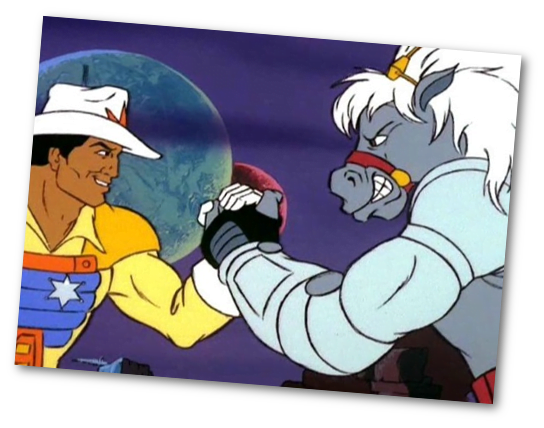
BraveStarr is noteworthy because Marshall Bravestarr himself is a Native American, or is ‘meant to be’ a Native American. We see glimpses of his childhood, moments where he was living in a situation best called Cartoon Tribal. We hear the story of Shaman the Shaman, who quotes some very Not-Native-American lessons translated backwards (‘to truly understand someone, one must walk a mile in his moccasins’). There’s a clear desire to have some sort of connection to Native American culture, but either by being too cautious to identify anything (unlikely) or genuinely believing that most Native American culture was airy-fairy and indefinite, it very much comes across as being ‘Native American’ culture, like a big broad sticker you can put on things.
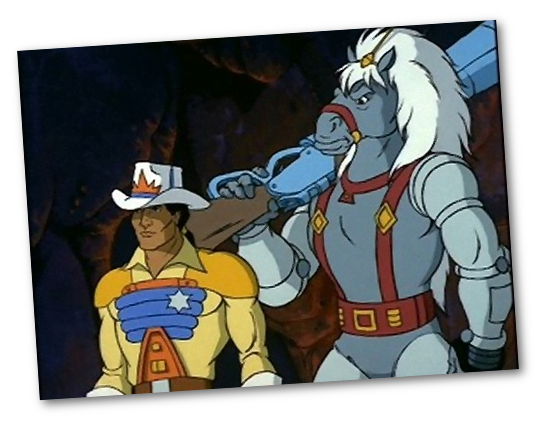
Ultimately, BraveStarr earns itself a very white You Tried sticker from another white person. Someone involved in this production wanted to do something with the idea, wanted their silly space cowboy show informed by westerns they liked and space-faring science fiction they liked and also to include an oddball cast of alien-looking villains that included at least one Australian shape-shifting dingo. It’s fascinating that this series tried to do something, that it tried something, but it tried really stupidly.
It serves as an example of how you made an effort isn’t always a good enough excuse to be satisfied with a result.
Thanksgiving Day 2017
For Context: A few years ago I learned that there are elderly people who write Thanksgiving day letters to unparented/unfamilied queer youth who feel alone and isolated during the holidays. This is my attempt to contribute to this genre. I apologise if it is too short or too long – this is something I do rarely.
It is very possible you might find this embarassing or cringey. You are not obligated to listen to this at all but I hope it gives you some comfort during the holidays.
Audio Download
If you like the header image, and would like a larger version, here it is.
A Knight of the Black Rose
I have, as of the writing of this, played two small drafts of Conspiracy: Take The Crown, with four people drafting 4 boosters each, a format that is very forgiving to newer drafters… and I lost. I lost all of our games, and in some cases, I lost them spectacularly. But the thing I took away from every part of it was the joy of how these games and cards felt to play, and most amazingly, Monarch.
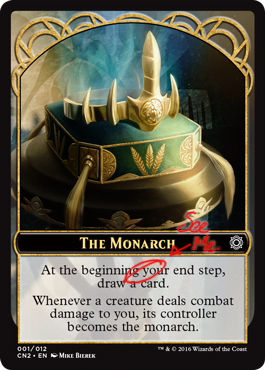
I love Monarch. I love the different ways Monarch shows up in cards. There are green cards that care about Monarch but are better in combat when you are the monarch. There are red cards that care about being the Monarch but get vengeful and petty if someone else takes it off you. There’s white, making monarch blockers and putting creatures on the board that make you choose between recovering the crown or preventing ever losing it. And in amongst it all, in both drafts, I wound up drafting but never seeing a card that has somehow become my favourite Monarch card of all.
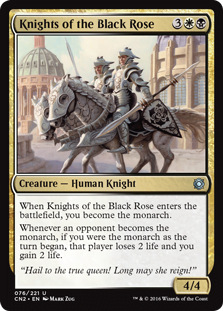
The Knights of the Black Rose are beautifully petty. They’re good on their own, effectively being a 4/4 creature that both draws you a card and leeches an opponent for a card. They’re disgusting if you can get them in numbers, which is a thing about monarch cards that tended to work badly: Often becoming and re-becoming the monarch on the same turn felt like a waste, encouraging you to slow-play a hand (and get killed by players who had no such qualms and were coming for the crown). I had one deck which, with Hymn of the Wilds, had a pair of these creatures, and the mere concept of dropping them as 4 drops – on turn three, thanks to Opaline Unicorn –
What I loved about this entire play experience was that the problems of multiplayer magic were reduced without being rendered meaningless. Board stalls did still happen, but just by dint of drawing more cards, players could see the stall breaking eventually. The card you get as a Monarch happens after you can play it in a main phase, meaning you don’t plan for it or hope to draw something amazing off it. There’s no way to become the Monarch off-turn, so the Monarch card becomes part of your plan for the next turn, which, thanks to the actions of other players gunning for the Monarch status, is also often a plan for getting back the crown.
If you can get your paws on some Conspiracy: Take The Crown boosters, I heartily recommend it as a draft format, and if you’re a new drafter or you’re not used to drafting, go to 4 boosters to give you a lot of chances to correct mistakes. A smaller draft pod means you’ll see the same cards more often and you’ll be more likely to wind up with enough creatures and get used to having to make hard choices without being paralysed by the indecision.
I really owe the friend who bought these cards and our next plan, going forwards is to implement these Conspiracy cards into a cube so we can do this fun all over again. Any recommendations for what to add to a cube that starts out with a box of Conspiracy?
The Comedy of Space Quest: Juxtaposition
I’ve been playing a bunch of the Space Quest games lately. Probably not going to Game Pile them, because really, they’re not actually that good and I don’t have anything that feels that worthwhile to say about any individual element in each game. The whole, however, deserves mention.
There’s a very specific type of joke in Space Quest. It takes this very simple form when you look at an object:
This is either a quadrilateralising hyperdimensional retronetropic core refolder disjunction entity, or one of those cheap end tables from Ikea.
Super detailed thing you couldn’t possibly recognise, incredibly mundane and obvious thing. That’s it. This is a joke the game series overwhelmingly uses. When I noticed this today, I went back and double checked a bunch of stuff in the games and realised that it was really core to a lot of how the games’ universe worked. They’re almost all about high-tech problems and low-tech solutions, about complicated plans running into a total dunderhead. Even the games’ very basic premise is obviously about juxtaposition: Your main character is a space janitor. The reward you receive for saving the galaxy in the first installment? It’s a golden mop.
Now this is mainly notable to me because I feel like this is how I structure jokes. I feel like this is the first place I learned this habit, the way I could recognise jokes working. Put the complex next to the simple, put the highly esteemed next to the practical. Contrast and compare and let there be an inherent comedy there.
Game Pile: Shadow Of Mordor
With Shadow Of The Most Generic Name Ever on the horizon, I decided it was time to return to the first game in this franchise, one of the many 2014 Licensed Games That Was Stunningly Good.Continue Reading →
3.5 Memories – The Illumian Swordmage
It could be possible to think that, given the ease with which I point out design and balance problems in Dungeons and Dragons 3.5, you might think I hated this system, or hated its power level or had some sort of fundamental problems with the way the game worked. This is – well, it’s a half truth. I absolutely wish the game was better designed, a more elegantly crafted toolset for the stated aim.
But I loved making characters in 3.5 D&D. I loved playing them, and I loved the busted stuff I could make it do
So let’s talk about that stuff!Continue Reading →
Making Fun, Episode 3 – Defending Candyland
Korra: The Darkest Shadow
How do you follow up success?
How do you follow up runaway successes?
How do you follow up literally the greatest example of its genre of all time?
Avatar: The Last Airbender is, broadly speaking, the greatest piece of long-form western animated storytelling that exists. When you take into account its competitors, they’re usually storytelling forms that have different demands, but when viewed in terms of just itself – continuity-driven human drama stories told using animation – there just isn’t anything that touches it. I say that as someone who really dislikes some elements of Avatar and its coding, who thinks there’s waste in that otherwise dense series. I like Avatar less than I recognise its overall quality and its excellence as a story.
It sort of follows sadly then that Korra, a story I like better, is much worse made.
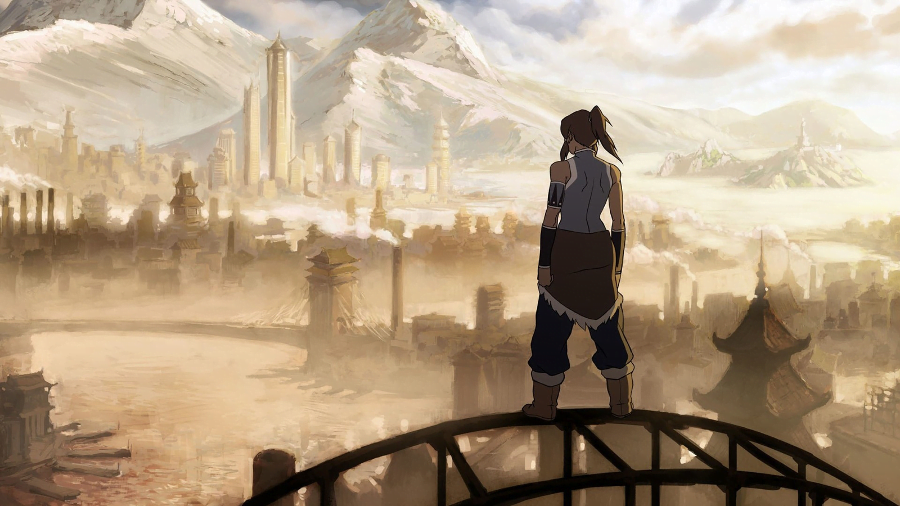
Thinking In Two Directions
Some notes about writing and notebooking in the
body of a book as it pertains to fluid thinking
once you get into the habit of thinking of ‘who
told me that,’ you’ll start verifying ideas, of ‘to
me, this makes sense,’ becoming less common.
The problem with much of us these days, with the
world, is a feeling of emotional certainty about what
is not necessarily true or even scrutinised. I’m
gunna admit my own habit of accepting ideas that
roll with how I already think, ideas that tell
me, ‘you are doing okay’ and to be honest
I don’t think that’s necessarily an evil. You
ain’t going to stop your brain doing it, so
the next best thing is to refine your responses to the
sharpest point possible to look at reflection as a
tool for critical self-engagement to make it
in an otherwise unexamind and uncritical world.
The next thing to do is examine the first word on each
shed.
this was originally written at MOAB, hand on paper
Contraptions: Then and Now
This is an article written by two men; one from 2007, one in 2017. I was there when Steamflogger Boss was printed, a card that I had a personal complaint with. It arrived at a period where Magic: The Gathering was growing in cost for me; when shipping costs for singles became a bulk of the cost of buying them, because there was no local store selling them; a period when I felt keenly that boosters needed to be fun to open, and where I was heavily focused on the feel-bad moment of opening not a niche rare but a rare that I felt was ‘too bad.’
This was a period when Wizards were communicating about their work – and one of the things they did, was to share with us Multiverse quotes, from the internal database. I took these comments very personally, trying to read into them a tea-leaves situation that painted Wizards employees as thoughtless and removed from concerns like mine. Which, to be fair, they probably were but they weren’t responsible for international delivery and my being scrape-behind-the-couches-for-coins poor.
What I wrote back in 2007 for The Money That Was That Week’s Magic: The Gathering Budget, is presented here, redacted to get rid of any really gross language and for brevity. If you want to go read the whole text… don’t. Continue Reading →
Project: Strange Days
The Pitch: It’s an asymmetrical multiplayer game where one player is an evil entity organising a plan while the other players are low-tech hackers trying to avert the end of the world.
Details
This is one of the more elaborate board-card games, where you get a fairly large number of cards in a number of sets:
- Player cards, indicating what the players can do
- Player action cards, indicating a loadout of skills each individual player can have
- Scar cards, which are status effects that can be imposed on the players
- The threat deck, which is full of cards that build out and form the encounter players deal with
- Resource cards, indicating things you earn for success
- The threat identity cards, which when revealed give the threat some sort of drawback or weakness
In this game, there are a handful of deck sets; the monster has a deck of cards they get to rearrange every turn to construct a type of challenge they want people to fight through. There’s a deck of cards, known as Scar cards that represent the way players are affected by the experiences of being a hunter of this terrible force.
The game has a very VHS Fuzz Aesthetic:
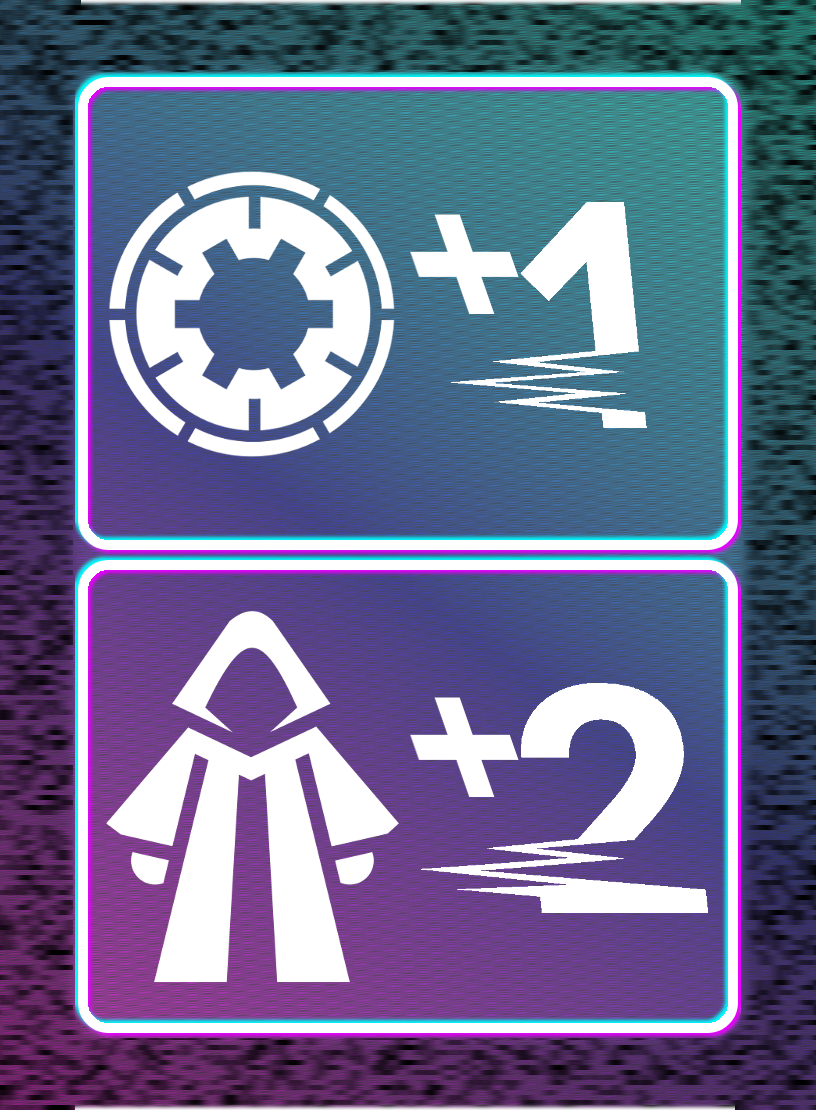
This is an example of a Threat card face, showing a card that gives you 2 cultists and 1 reinforcement. Players need to bust through reinforcements, while cultists are swarming them.
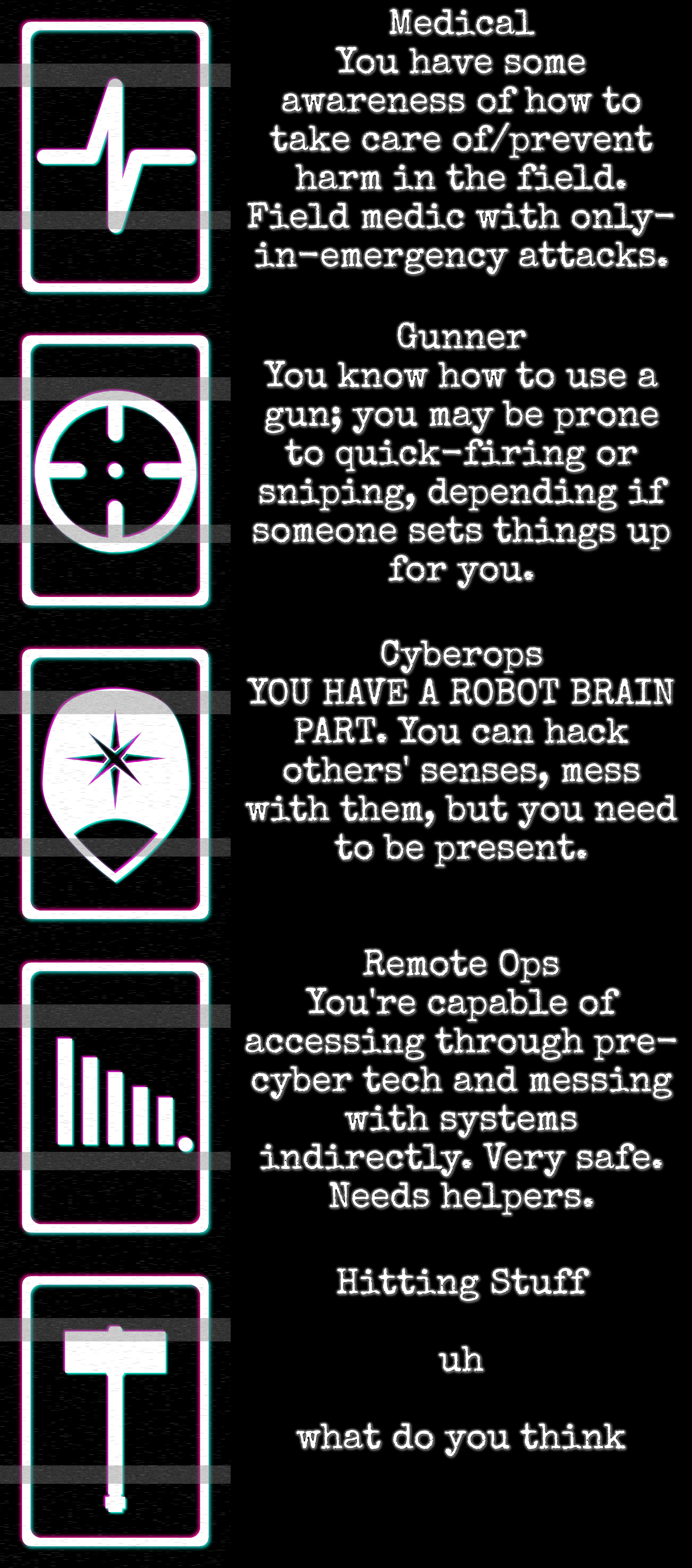
This is an identity set showing what the player action cards are like.
Needs
Interest! Right now while I like Strange Days, it’s an idea that’s overlapping elements of horror and cyberpunk, it’s also a game that needs tokens and cards, which means it’s going to live, like Skulk on Gamecrafter – a format I haven’t yet tested and proven as a possible avenue for selling games. Basically, this game is interesting to work on but I’d need to know people cared a lot more than I know they do.
Also, I cannot currently afford to actively comission this game project! I do not know if my state of money will change or how your relationship to the potential payment would work out! Do you think you have the skills for this? Are you interested in the idea? Feel free to contact me, either via the Twitter DMs or by emailing me!
Game Pile: Sproggiwood
Well this is a bit lovely, innit?
Sproggiwood is a turn based roguelike* explorer game, where you play characters from a tiny little forest civilisation of adorable Clogheads, delving into little demense of Finnish mythical creatures. You follow on the behest of – well, at first it’s a condescending sheep, but the story unfolds a little weirdly from there. Really, a little weird is a good little thematic mantra to use for the endlessly smiling, effortlessly charming Sproggiwood.
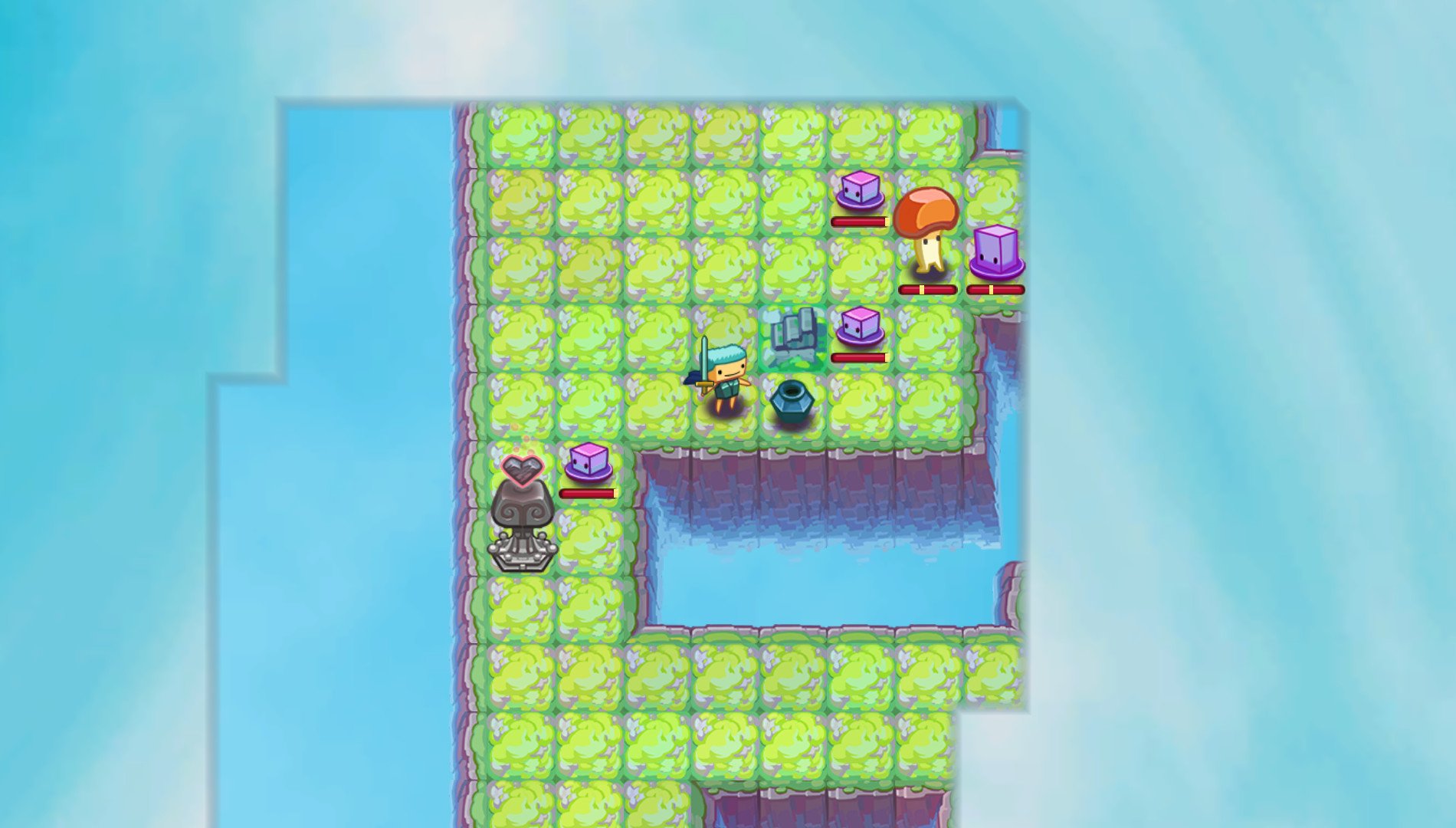
Now I should feel bad that I don’t really know any of these myths, despite having Finnish relatives, but I’m not fooling anyone if I tell you that my Finnish culture is much more about the baked things that you can stick in your mouth when smeared with butter.Continue Reading →
Project: Bunny Field!
The Pitch: It’s a build-out game like our game C-QNS, but instead of abstract numbers and shapes, you’re building a meadow of lovely flowers.
Details
Each player is drawing cards off a single deck of cards to add to their own hand of cards. Then, each turn you can place a card in the grid around the deck that represent the growing spread of flowers in the field. Each card sets rules about what cards can be placed around it – flowers grow in patches that decrease and increase in density.
You’ll also have cards in the mix that let you flip cards face down, or layer cards atop others, with cards like bees (that help flip cards face up) or butterflies (that improve the value of cards they’re atop) or bunnies (that flip cards face down).
Cards would be mostly, representing a simple standard back of a grassy meadow, with the other face showing flowers in a number, with some mechanical signifiers. Cards would not explain what they do on them, so as to make the art very prominent.
The game would not need to be particularly large, and probably only about 52-70 cards, with a single deck that grows outwards. Players might start with a card that indicates the type of flower they want to play, or their last card in hand might indicate the flower type they score off.
Needs
Right now I have no art to start with with this idea. This project needs a fairly holistic artistic vision of showing a location and things in that location; it needs images of flowers, of bees, of butterflies, and of a nice, pastoral background as well.
Also, I cannot currently afford to actively comission this game project! I do not know if my state of money will change or how your relationship to the potential payment would work out! Do you think you have the skills for this? Are you interested in the idea? Feel free to contact me, either via the Twitter DMs or by emailing me!
Amerimanga Covers II
My Guild Leader Is A Demon
First up, some disclosure: This series, My Guild Leader Is A Demon is made by a friend of mine, 0xabad1dea. While I know I’m in the dedication of one of her books, I don’t think I’ve had any influence or involvement in this project, and I’ve not been paid for this piece.
There is potential that she might implement/reject some ideas I mention here, as the series is ongoing, but as far as I know, no such thing is expected to happen. Basically, if I say something here and it winds up being true in this series, assume 0xabad1dea was going to do it anyway.
My Guild Leader Is A Demon is a web-series/kinetic novel. There’s some consideration on my part as to whether to treat kinetic novels – storytelling which has no major interaction beyond ‘keep going’ – as a series or a videogame. In this case, 0xabad1dea has taken a full play of the game and put it up on Youtube, where you can watch it as a single video.Continue Reading →
Making Fun, Episode 2 – Defining Games Journalism
This episode of Making Fun went a direction I wasn’t super wild about at first. I want to talk more about making games and things and ideas you can get from doing that – but well, I also wanted to see how quickly and easily I could belt one of these out.
This entire video took 4 hours to make, script to done. Pretty happy with that!
Planar Chaos Sucks (But It Doesn’t (But We Learned Nothing From It))
Back when Planar Chaos came out I mostly said at the time that it was a fine opportunity for Wizards of the Coast to address its failings, and start setting a new hard precedent in what the game should be, citing the examples of Damnation and Prodigal Pyromancer as signs of what the game’s colours should feature. This perspective, broadly speaking is wrong because Planar Chaos wasn’t meant to be that. I was the one in the wrong, with my sensible-seeming but incorrect assumption.
As it turns out, I was not alone
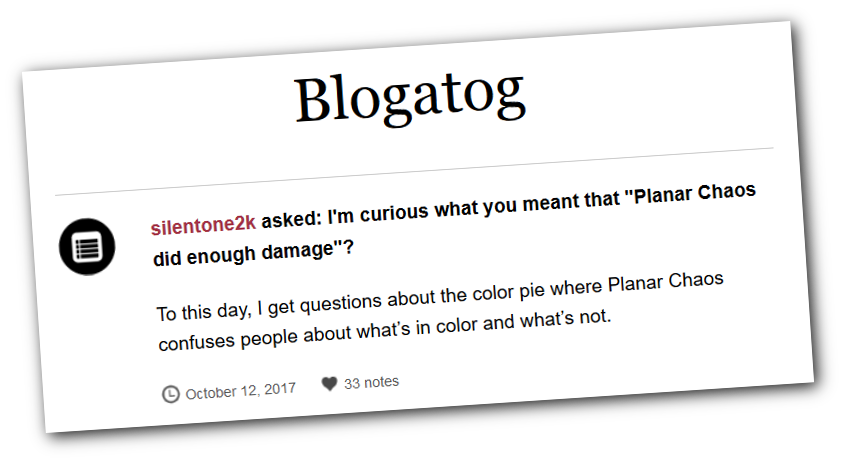
Making Fun, Episode 1 – Paratext
Goodness me, this is a thing I didn’t expect I’d do!
Inspired in part by Innuendo Media, Sideways and the work of Campster, I decided to give it a try to make a short-form video essay. The tools I’ve used to do it are quite bad, and I’m going to look for ways to make this more convenient and easier, but hey, check it out! I explain the concept of Paratext as it relates to play, which is important to how I wrote my honours thesis.
Game Pile: Snakebird
Over time I’ve come to wonder what the purpose of the Game Pile even is. I know that it’s slowly morphed from being a sort of diary listing of the videogames I’ve played in my digital collections, then straight-up reviews to slowly morphing to where it is now where I try to use each game as a launching point to talk about something interesting a game does while still giving useful information about whether or not people might want to play it. A sort of consumer advocacy coupled with artistic analysis, which really is what most reviews are but on a much tighter time scale.
Some games don’t really merit a lot of deep talk though? Some games are just unremarkably good or acceptable or decent?

And speaking of Unremarkably Good: Snakebird!
#fff, 1px -1px 0 #fff, -1px 1px 0 #fff, 1px 1px 0 #fff; -webkit-text-stroke: 1px white; padding: 30px;">Recognising Goodness
Snakebird is a puzzle game with a slightly hard to describe mechanism: The player controls one (or more) of the game’s titular snake birds. They are birds, because they can somewhat maintain themselves in the air. They are snakes, because they move in the four orthogonal directions in a videogame space, as real snakes do. Snakebirds can push other snakebirds, they eat fruit – as all good and noble videogame animals do – and … that’s it. The whole game is built around this simple puzzle set and… yeah, yeah that’s it. Is that two hundred words?
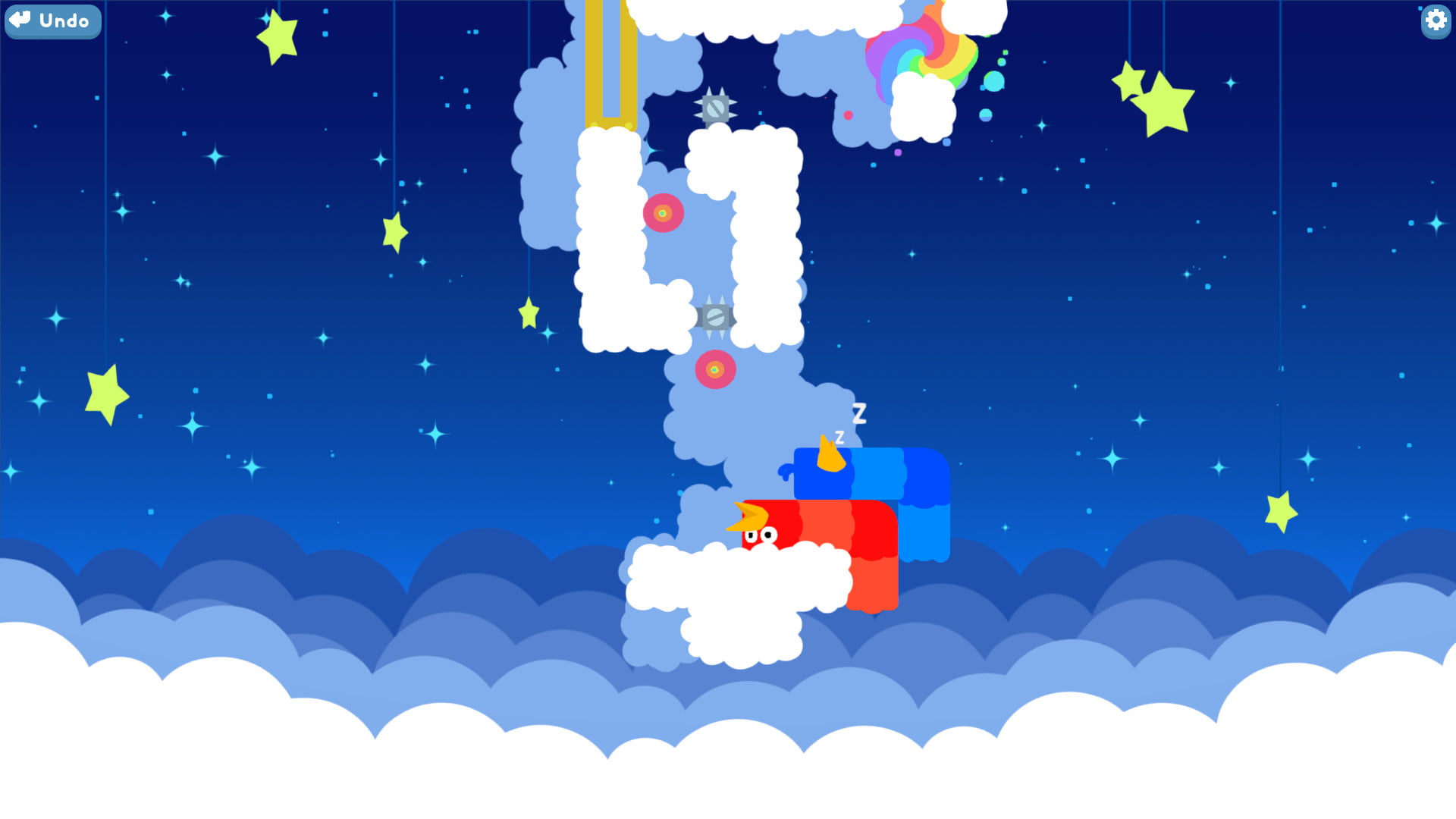
There’s nothing much to say about Snakebird because Snakebird is just really good and above my skill grade. For all I know around puzzle thirty, Snakebird is just fireworks and boobs, but I have no idea, because it’s really hard!
I’m not good at puzzle games.
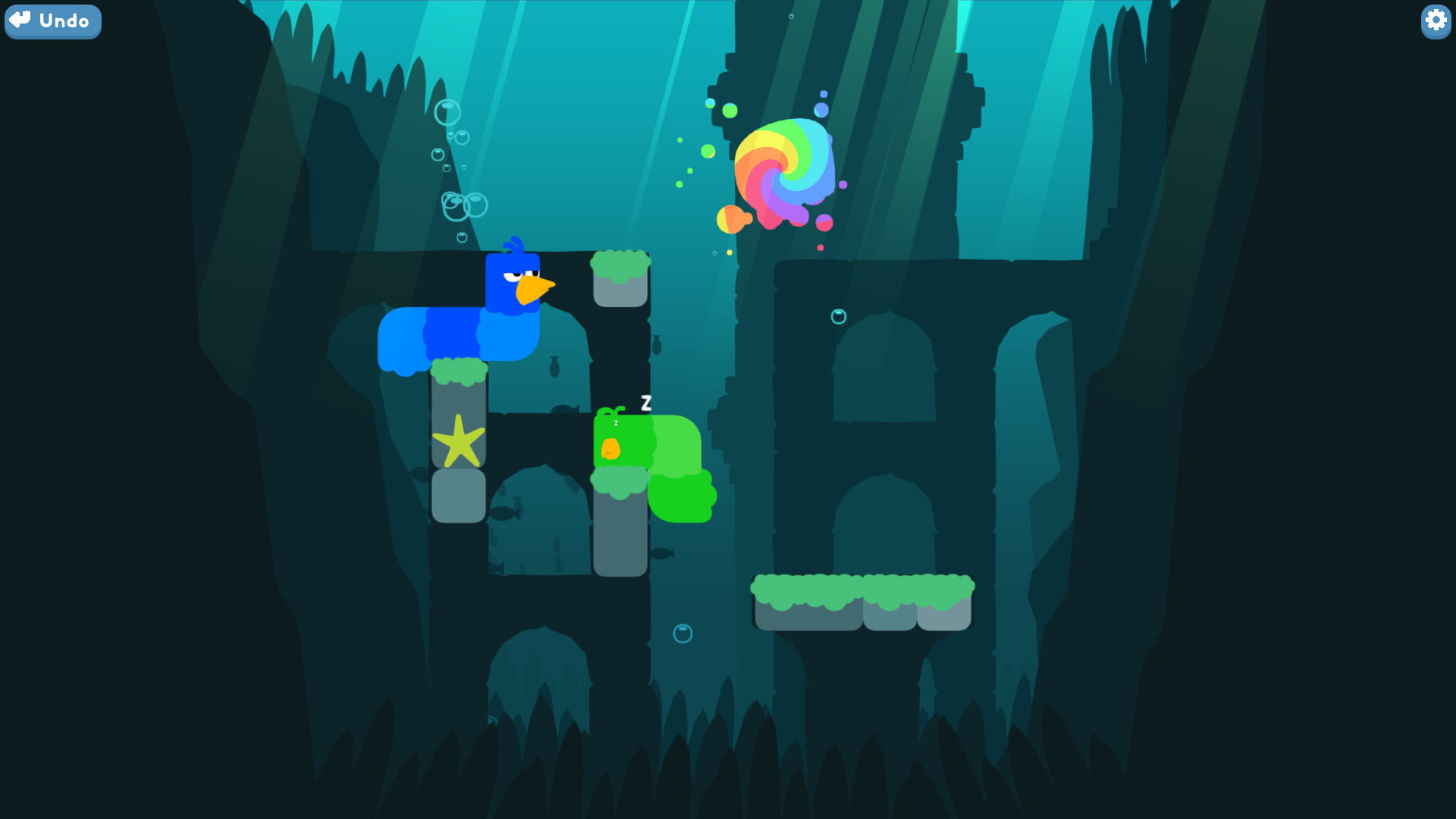
Nonetheless, Snakebird does have one particular thing about it I’d like to point out: The game has an adorable interface quirk. In Snakebird, the birds have faces, faces that react to how you’re doing. You can turn and shift your snakebird and when it gets near fruit, it gets excited. Repeat too many actions? The snakebird gets kinda bored.
There’s so little to say about this game, just because it’s really good? And that’s … really all there is to it? It’s got good cloud saves on Steam? Which is… nice?
#fff, 1px -1px 0 #fff, -1px 1px 0 #fff, 1px 1px 0 #fff; -webkit-text-stroke: 1px white; padding: 30px;">Verdict
You can get Snakebird on Steam.
Verdict
Get it if:
- You want something cute and harmless
- You want something portable with good cloud saving
- You want a really renewable puzzle
Avoid it if:
- You’re on a tight budget and don’t expect to get a lot of mileage out of a puzzle you might not be good at
The Song In The Scene
Let’s compare two songs.
First, from The Hunchback Of Notre Dame, the narrated piece, The Bells of Notre Dame.
Second, from Moana, Jermaine Clement’s song, Shiny:
Now, these songs don’t have a lot of similarity between one another, really. Shiny is a comedy piece, a sort of mid-stage development point for the characterisation of Maui and Moana, and Bells is the introductory piece for Judge Frollo, Quasimodo, the Priest, and Notre Dame itself.
These two songs, however, show to me a distinct difference in how Disney does things these days versus how they did. First of all, let me clear up that Shiny is a straight-up comedy song. It’s definitely funny – Tamatoa breaks the fourth wall, he tells jokes, he’s very big and exaggerated. It’d be pretty easy to file it as the comedy number with just some details in it.
The thing is, I see these two songs as being startlingly similar and also extremely different. The main thing about them that’s similar is that they’re both songs that tell you about the setting, tell you about the characters involved, incorporate narrative, and reveal a backstory element of a character. Shiny’s a jokey song but it’s a song that does as much as Bells.
The thing they do, however, that’s both songs have a component of the movie’s story happen in the middle of them: In Bells, that component is part of the song, and is implemented as such, but in Shiny, it interrupts the song, and is unrelated to the song: This is particularly interesting because the singing in Disney movies is usually diegetic but also nondiegetic: Nobody really explains that a character is actually singing in any given scene. Moana even uses its diegetic music to convey the transition between languages you saw in We Know The Way:
See that? The way the people of the tribe are singing the song when it’s in their native language, but they’re not shown singing it when the song transitions to English? Wonderful stuff, ingenious.
Now, the thing that prompted this whole idea, though, is something I don’t like that much: These songs are of their space in this story – inextricably. The songs in Moana cannot be easily removed from the movie to listen to as a song, which I think, emperically is kinda harder and more impressive? It means that those songs exist as pieces of the whole, that there’s more work and difficulty involved in constructing the musical.
But at the same time, there’s still something of me that admires and respects the difficulty in the song being the song; that you have 3 minutes to convey what the song’s doing, that it is a discrete piece of media, and the movie implements it – in the same way that a good piece of dialogue can be removed from a scene, and still implies the rest of it.
Anyway, that’s a really minor, aesthetic point and just something I think is interesting, particularly since this habit of breaking structure – of using music to build a structure then breaking out of it by the use of diegesis – is a very hip-hop thing to do.
Project: Asylum Jam 2017 Game!
The Pitch: It’s a drafting game where you’re all trapped in nightmares rent by guilt, and only one of you can escape into wakefulness. Or maybe you’r assembling a demonic rune so you can consume the souls of the other players. Or maybe you’re making deals in a demonic market. Or maybe you’re escaping a slasher movie villain.
Details
The game is played in an open rochester draft from a grid of 3×3 cards. Players each on their turn get to draw a card from each stack.
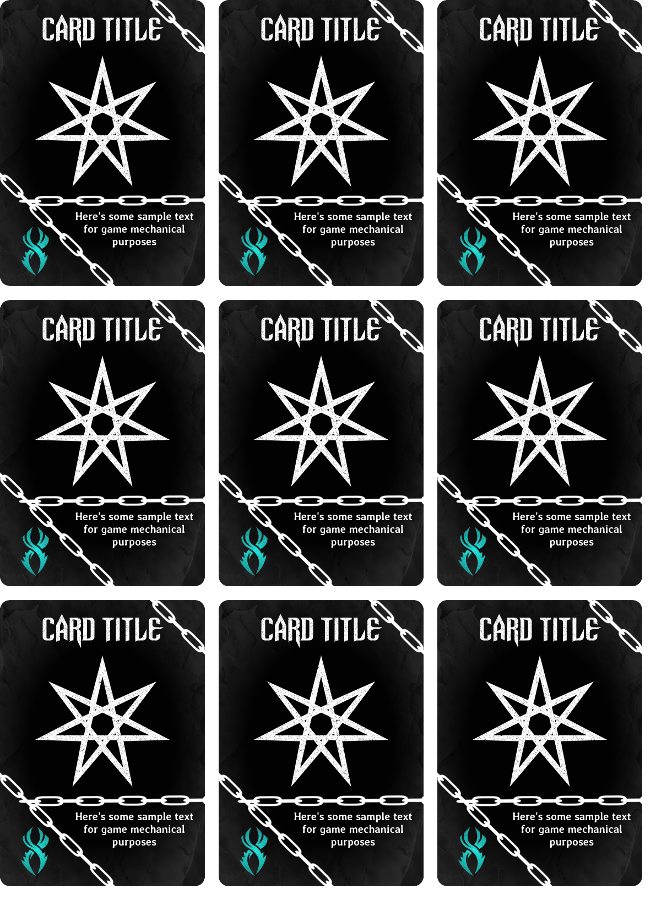
By default these cards have a face that represents some sort of virtue or ability you have for yourself. The cards have a visual element on them to make them easily sorted from one another, and each card has room for a basic symbol that sets them apart from their others, allowing them to collect into sets or protect one another. These cards are cards that make up the bulk of what you want to do, and they are also your personal resolution and protection as the trauma of the night shakes each player.
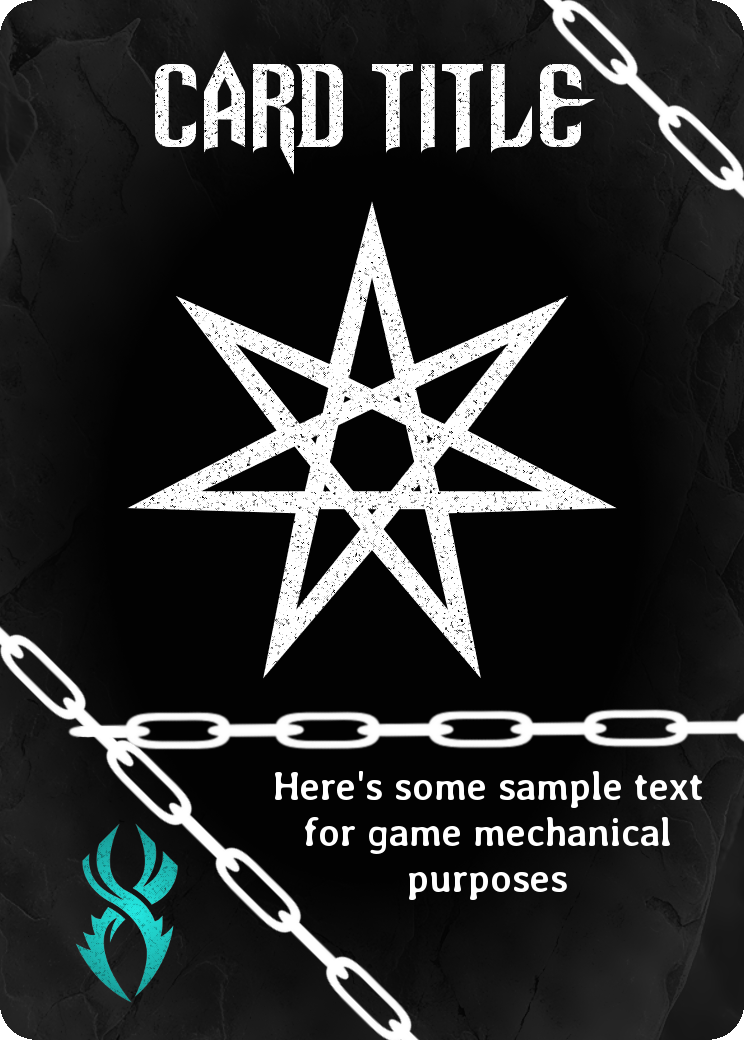
At the start of the game these stacks are seeded so that each stack features a single marked red gem card. These gem cards represent the game ending: Each time such a card is revealed, you take it off the stack immediately, and secretly flip it over, shuffle it into one of the other stacks, and then reveal the card beneath it.
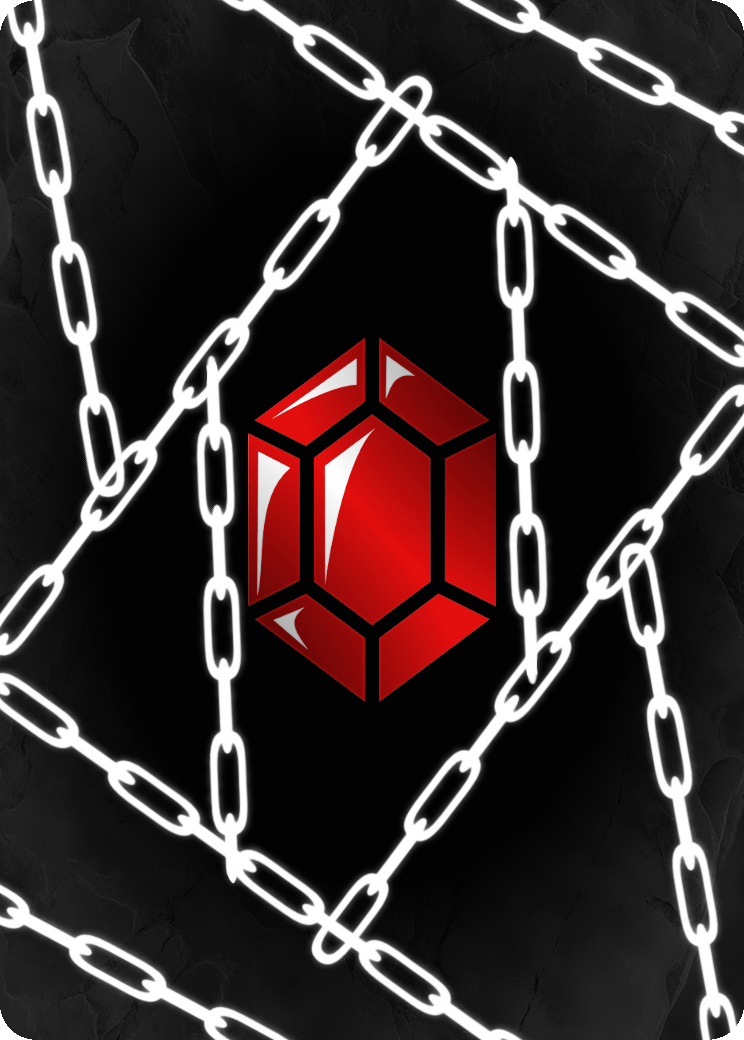
Face-up ruby cards (and let’s face it this asset will change) when revealed by taking a new card inflict a penalty on the player who takes them, and when a certain number of these cards are revealed, doom has grown too great, and the players are suffocated in the darkness. Only one player has a chance to escape this – and it depends on what they’ve drafted up to that point.
So play is about building a defensive bulwark, a way to protect yourself, and trying to lay landmines for your opponents.
Needs
Well if this idea only goes up until the end of Sunday Night (the 48th hour of the time I assigned to work on this), we’ll have to see how close we get to it. I’m still not sold on the theme either: I want this game to be a one-deck wonder and I don’t want to play with horror themes, but if it’s about escaping/surviving a slasher movie monster, isn’t that preying on fears of mental health as well? Is any horror trope borne out of mental health concerns when they come from someone who’s the survivor of mental and emotional abuse? Can I write a horror that is not tainted by the horror in my own mind?
There’s also some choices for aesthetics. We’ll have to see.
Anyway, if you want to play this game, or have ideas for aesthetics or ways to add to this game, let me know! Feel free to contact me, either via the Twitter DMs or by emailing me!
Miraculous: Rescuing Cats
There’s this book, called Invisible Ink, by Brian McDonald, which I haven’t read, but I have heard summarised, and that right there is kind of a punchline in and of itself. The book has a bunch of stuff in it (including gender-coding storytelling tools, so I dunno, nevermind). In that book he outlines the idea that a lot of work is put into characterising and presenting certain characters in movies that fail at making those characters resonant because there’s something wrong or missing there.
The example given is the idea of rescuing a cat from a tree, something Superman does. Anyone unfamiliar with this scene idea or story beat probably doesn’t read this blog, but assuming otherwise, the idea is that a Superman story takes some time early on, before the story has ramped up and tension is high, to show Superman rescuing a cat stuck in a tree and return it to the people who are afraid. It’s a simple, small exchange, and one that most Superman movies have left out.
I think about this moment a lot, and here’s what’s had me thinking about it lately:


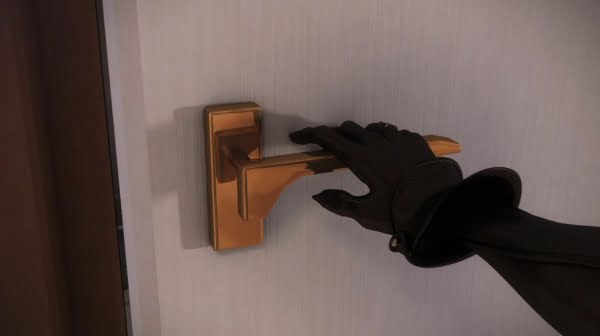
In Miraculous, there’s a moment where Marinette, as Ladybug, goes into a room to hide when she transforms. The door is ajar, and she left it that way, so it’s not like looking in the open door requires an action. If you were outside, and the light caught your eye, there’s a deniability to looking. Adrien, as Cat Noir, is outside and is in a position to look.
Now to be clear, there is no actual need for Adrien to be there. The story has been resolved and it’s an established point that Cat Noir often leaves the scene of an incident quickly so he, too, can transform back into Adrien and hide his identity. If the story wanted, he would not even be here.
Adrien approaches the door where Marinette is changing, and closes it.
The story doesn’t need to do this. There’s no unending question of why he was or wasn’t doing something in that room at the same time, no plot hole introduced by his presence or absence there. There’s nothing that needs explaining here. There’s no reason for this scene – except to show you something of who Adrien is, and what he’d do when confronted with an opportunity to learn something about Ladybug she’s not willingly letting him know.
Bad Balance: Why Balance?
Dungeons and Dragons 3.5 was absolute nonsense balance-wise, but it was remarkable because it was imbalanced in a whole variety of different ways that are good object lessons for designers to take on board when making your own RPG content. So, rather than one huge master-post explaining it, here’s one example:
Why Balance?
Inevitably, in this kind of conversation, someone will sit back, stroke their chin and say Yes Well, But Why Do We Need Balance Anyway? and then deliver a smug, eye-raised look as if they’ve just next-levelled the entire conversation. And sure, they’re kind of right – you don’t need things to be fair. You don’t. Heck, you don’t even need a rules system, man.
Setting aside the obvious Let’s Take It Too Far And Show The Point Is Ridiculous, the question of balancing 3.5 D&D seems to always bring up someone who, weirdly, echoes the arguments of 2ed D&D before them. It usually comes down to it’s a cooperative game and there aren’t any winners or losers and therefore, balance is a phantom that need not be pursued, as if somehow, the game’s function is inhibited by balance, and that balanced things impose themselves between fun and the players.
Problem is, someone has to run the game.
Balanced characters aren’t balanced against one another to meet some arbitary philosophical goal. They’re balanced against one another so the person running the game has a reasonable, handleable piece of information about things they can present to the party. Big deal, the response comes: the DM can just tailor-make the experience for the party, every time. All they need to do is know what those characters can do, how good they are at it, how resistant they are, any rare abilities they might not use often, and how well they hit things, what they attack.
Which is to say: You don’t need balance. You don’t! Knock yourself out. You do you.
But there’s a virtue to having characters with roughly comparable ranges of power and utility, because it means that the people running the game aren’t faced with an enormous different task of challenge construction. That means that when someone wants to run a D&D game, they’re not presented with a cliff face of learning. It means that there are going to be fewer situations where the players try a thing they’re meant to succeed at and fail because it so happens that the enemy’s abilities fall into a venn diagram of specialised, obtuse weaknesses.
If you’re playing D&D 3.5, a game primarily designed around tactical movement and combat, and you think it doesn’t matter that it has a decent tactical movement and combat system that is reliably testable, provable, and functional, then maybe you want to play a different game? There are a lot of great games out there!
That’s the next lesson: Balance can be valuable for games, even cooperative ones, because it allows the person or people making the challenge to construct meaningful challenges.
MTG: Modern Rock
Let me show you something embarassing, and old.
Back in 2007 – ten years ago, dear god, Lee Sharpe Ken Nagle and Kelly Digges all work for Wizards now what have I done with my life – I wrote an article for StarcityGames about Rock. Rock, the deck, Rock, the archetype, Rock the type of deck that isn’t really defined by what’s in it – not really – but is really more about how you relate to it.
I wrote about this deck, as a deck that I had had since it was an Onslaught-legal standard deck, with [mtg_card]Oversold Cemetery[/mtg_card] returning [mtg_card]Ravenous Baloth[/mtg_card]s.
[d title=”Ten Year Rock” style=”embedded”]Creatures
4 Darkheart Sliver
4 Frightcrawler
3 Krosan Tusker
4 Nantuko Vigilante
4 Sakura-Tribe Elder
4 Twisted Abomination
4 Werebear
Support
4 Oversold Cemetery
3 Death Cloud
3 Life from the Loam
Lands
9 Forest
4 Swamp
3 Barren Moor
1 Overgrown Tomb
3 Terramorphic Expanse
3 Tranquil Thicket[/d]
This deck was weird. Looking back on it I mostly remember it being kind of awkward about some of its draws, based on a deck Richard Feldman spoke about once upon a time that was about using Skullclamps to Not Draw Two Cards. It was a different time, but with one lesson I never really got rid of in my deck building.
I like to think this is about having a plan but it’s a little more bald than that: The lesson I learned is that if my deck wants to cast Death Cloud, I want to make sure that every card I draw is okay after a Death Cloud.
This lesson bears out in a lot of other decks I make; I try to think in terms of what I’m trying to do, and then if that plan holds together; does anything work against it? It’s a decision process that sometimes leads to seeing things others do as suboptimal – I don’t like, for example, running expensive cards alongside Dark Confidant, even if the math of it and the play of it works out. I never added Golgari Guildmage to my build of this, even if it was a bear after the Cloud, because it was just a bear. Even Werebear was an iffy include in this deck – because it meant I sometimes wanted to Death Cloud for not as much as possible – because that would leave me with only 2 mana on the board.
The cards that left this deck over time as Extended turned to Modern were cards that were replaceable – [mtg_card]Frightcrawler[/mtg_card] – and cards that very much weren’t – [mtg_card]Barren Moor[/mtg_card]. Strangely, despite what you’d think, nothing ever stepped up to take the place of Oversold Cemetery, a card that lives through a cloud and rebuilds after it; a card that gives you a way to hang on before the cloud and a way to blow out after a cloud. I thought, at first that surely a Planeswalker existed which could take this spot – even just some three mana walker that could ruin an opponent’s face after a cloud, but I’m really surprised to find that there isn’t. Maybe I could splash for [mtg_card]Gideon of the Trials[/mtg_card], he laughed, but even [mtg_card]Liliana The Last Hope[/mtg_card] doesn’t seem to fit.
When I first penned this article, Ixalan was on the horizon, full of potential. It had the possibility of adding a exciting Vraska planeswalker, perhaps, a 3-mana GB planeswalker that resembled, say, [mtg_card]Nissa, Steward of Elements[/mtg_card], you know, some filtering, some card advantage, some way to be useful after a Cloud. This has, unfortunately, not proven to be the case. I was hoping there’d be something I could present from Ixalan that would serve as an object lesson how it plays into the plan, but the problem is that there’s almost nothing that could. Sure there are creatures that could be put in the deck, because they cost 3 mana or less and are green and black. None of them do things to advance the plan of the deck, though. [mtg_card]Tishana’s Wayfinder[/mtg_card] is not meaningfully better than [mtg_card]Civic Wayfinder[/mtg_card], for the purpose of the deck’s plan, after all, and I stopped running that a while ago.
Still, there surely must be something, he told himself, rummaging for an option, until he came to [mtg_card]Deadeye Tracker[/mtg_card].
Now look.
Deadeye Tracker superficially looks like it could belong in this deck. It costs less than 3, and its abilities – 2 mana+1 mana – tie together nicely to make a 3 mana cost. In a world with haste that would be very efficient unlike some other creatures that tried for this spot like Nezumi Graverobber or [mtg_card]Nezumi Shortfang[/mtg_card]. Plus, after a Cloud, it will absolutely have fodder to feed its exiling ways. If that happens it’ll start fuelling my own card selection and, if not, provide me with more lands as a way to rebuild. It compares favourably to something like Phyrexian Arena.
Problem is, before the Cloud it’s stone worthless. Well, it’s nearly stone worthless.
I do not hold hopes for this one-mana 1/1 to meaningfully beat up other creatures. It will not stand in the path of bears, it will not trade with anything and it will not slow tramplers. It is, before a cloud, not a mid-rangey card, and does not stick with the plan. The plan wants to draw the game out and make a Cloud happen… and the Tracker isn’t going to be any good getting to there. What that means is that if I’m putting this in the deck it’s for the same reason the deck once had a lone [mtg_card]Crypt Creeper[/mtg_card]; it was because I wanted, nay needed, at times, a way to flush out something troublesome from an opponent’s graveyard. Is it better than [mtg_card]Nezumi Graverobber[/mtg_card], that could trade up, and maybe even flip if it ever somehow did? Probably not.
I was really hoping this format would shake up this little modern toy of mine. Alas, alack, and we move on.
Term: Drafting
A draft refers to when players make exclusionary choices from a common pool; you’ll see this sort of thing in professional sports to determine where players wind up. In card games, however, a draft usually refers to a mechanism where players each are given a handful of cards, choose one card, and remove it from the hand, then pass their hand on to the next player.
Utility
Draft based on cards can put complexity on the cards themselves, rather than in the fundamental structure of the game; the game has a really simple rule of Take A Card, Pass Everything Else Along. That means players can focus on just the cards in their hand, that they can select from, and not need to worry about what else is going on at the table (though they might).
Draft is also simultaneous: Players will all be taking their turn at the same time, meaning that even if one player is markedly slower than the others, players won’t be waiting the entirety of their decision making process, since they have to do some of their own decision making process.
Limitations
Draft is a super duper complicated way to design your game. In the case of a bigger game where draft is used as a component, like Magic: the Gathering there are thousands of words written every month or so about ways to do it well, strategies for repeating the same game, things you can do to handle the variance and things you can do to capitalise on it.
Players get to see a bunch of the cards in front of them; they get to know what they’re passing, and that can mean that players seeking an edge may feel obligated to remember everything going around the table. You can find this a bit paralysing.
You can make drafts open, where everyone makes it clear what they’re taking each turn, which gives players even more information, and may be even more paralysing. If you do this it’s often best to have a common pool that everyone takes one thing from at a time. I’m less fan of this but it can be a good way to make players hold grudges against one another.
Examples
Some drafting games include Magic: The Gathering’s limited format (known as draft, helpfully), 7 Wonders, and Inis.
